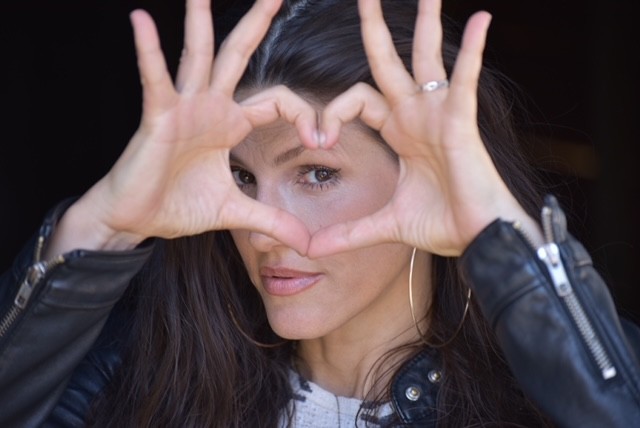The book “Mindful Rigor”™ delves into the integration of mindfulness practices within the realm of dance training, emphasizing the holistic development of dancers of all ages.
The fast-paced and highly competitive world of dance can be an arena of harm and hypersexualization of children. The integration of mindfulness practices offers a transformative approach to training. “Mindful Rigor” explores how mindfulness can enhance not only the physical but also the mental and emotional aspects of a dancer’s journey. Teaching these practices to young dancers, gives them tools to remain present in their bodies, minds, and emotions, which can help empower them to protect themselves from physical, psychological and emotional damage. Cultivating this awareness is precisely how dancers can guard themselves against forces that seek to sexualize them. Those forces remove dancers’ attention from how they feel to exclusively how they look, specifically, how they look in a sexually, to an external gaze. This article synthesizes the core concepts and practical applications presented in the book, providing a roadmap for dancers to achieve holistic growth.
A Brief History of Mindfulness
Mindfulness, though a contemporary buzzword, has ancient roots. Originating from the Vedic texts of the Indus Valley, mindfulness practices have been integral to Hinduism, Buddhism, and their associated yogic traditions for millennia. In the West, mindfulness gained traction in the 1970s through the work of Jon Kabat-Zinn, who established the Center for Mindfulness at the University of Massachusetts Medical School. Today, mindfulness is recognized for its benefits in reducing stress and enhancing well-being across various domains, including dance.
The Four Pillars of Mindfulness
- Body Awareness: Understanding and being present in one’s body is crucial for dancers. This involves recognizing physical sensations, movements, and the breath.
- Emotional Awareness: Acknowledging and managing emotions without judgment helps dancers maintain focus and resilience.
- Mind Awareness: Observing thoughts and mental patterns allows dancers to stay present and avoid distractions.
- Phenomena Awareness: Being aware of the environment and external stimuli helps dancers understand the community and their contribution within it.
Dancers often face mental challenges that can hinder their performance. Mindfulness practices offer tools to overcome these obstacles, fostering a balanced and joyful approach to training. When dancers can connect to the joy of movement without being sexualized, they discover a deeper level of lasting investment that supports them as unique individuals rather than as one-dimensional representations of sexuality as society imposes. Imagine if all young dancers cultivated an awareness of their bodies, minds, and emotions being acceptable, just as they are in every moment. This type of radical non-judgment would transform dance training in the West. By incorporating mental exercises alongside physical training, dancers can enhance their focus, reduce anxiety, and improve overall performance.
Practical Applications
- Refocusing Exercises: Simple techniques such as breath awareness and body scans can help dancers center themselves before and during practice.
- Journaling: Keeping a mindfulness journal allows dancers to reflect on their experiences, track progress, and identify areas for improvement.
- Visualization: Mental rehearsal of movements and routines can enhance muscle memory and performance.
- Breathing Techniques: Practices like diaphragmatic breathing and alternate nostril breathing can calm the mind and improve physical endurance.
Research and Evidence
The four-year study conducted at the heart of the “Mindful Rigor” book has shown that integrating brief mindfulness practices into each studio class leads to significant improvements in focus, emotional regulation, and overall well-being. The six-week intervention involving mindfulness practices resulted in positive outcomes for dancers, including up to 18% gains in metacognition, emotional intelligence, critical thinking, and sensory awareness.
Self-talk, the internal dialogue within the mind, plays a critical role in a dancer’s performance. Negative self-talk can sabotage technique and increase anxiety, while positive self-talk can boost confidence and focus. Creating self-talk trackers helps dancers become aware of their self-talk patterns and shift towards more constructive and supportive internal dialogues. This also assists in breaking mental barriers such as fear of failure, perfectionism, and performance anxiety, allowing dancers to stay present and perform at their best.
Rigor is a key component of the book. Understanding the body’s perceived limits and how to push beyond them is essential for dancers. Research by Dr. David Jones on the central governor theory suggests that the brain often sets conservative limits on physical performance. Techniques like forced exhalation, can help dancers safely extend their limits and achieve greater endurance and strength.
Mindfulness extends beyond individual practice to include interactions with partners, the dance studio, and the world beyond. Sympathetic breathing, where partners synchronize their breath, enhances connection and communication. Additionally, fostering a mindful community within the studio creates a supportive environment that benefits all dancers.
Integrating mindfulness into dance training offers a holistic approach that nurtures the body, mind, and spirit. Cultivating non-judgmental awareness, managing emotions, and fostering a supportive community, helps achieve greater balance, joy, and excellence in dance while protecting dancers from harm and sexualization. “Mindful Rigor” provides a comprehensive guide to incorporating these practices, paving the way for a more mindful, resilient, and fulfilling dance journey for dancers of all ages.
Bio: Lisa D. Long leads her life curiosity-forward. Her evolution thus far has flowed between dance, choreography, massage, education, and most recently, writing. She danced for Dance Kaleidoscope and Dallas Black Dance Theatre, and performed works by Donald Byrd, Iega Jeff, George Faison, and Chuck Davis. Her choreography has been produced at: Chartres Cathedral, DUMBO/Solo Duo Festivals, NYC, Oregon Shakespeare Festival, and Highways, LA. Backstage described her work as “imaginative and inspired.” Her research and book, Mindful Rigor: Holistic training to enhance dance performance, center mindfulness for dancers and her Podcast Mindful Mondays on Mixcloud https://www.mixcloud.com/ldlong808/mindful-monday-episode-1/ further dives into how these practices are useful for students of all disciplines. Her teaching is fueled by active respect for people of all ethnicities, body types, genders, gender identities, religions, ages, sexual orientations, abilities, socioeconomic backgrounds, regions, and nationalities. By creating an environment of awareness, deep listening, and respect, she seeks to empower each student with the courage to embark upon their personal journey. She is Professor at CSU Fullerton. Webpage: https://dlongdance.com/



